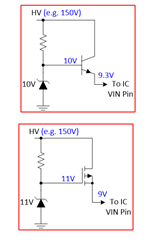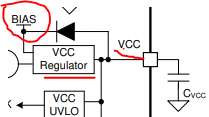Other Parts Discussed in Thread: LM5020, LM5158
Tool/software:
Hello TI,
I have to design SMPS power supply providing 12V 2A output and using 6-35V input.
I would use LM5156 but the circuit has to survive 80V while LM5156 can withstand BIAS to GND 65V max.
Are there any TI alternatives to LM5156 which could survive transient 89V?
The only one I found so far is AD LT3758 but I would prefer some newer chip from TI.
Please advise.
Thomas




